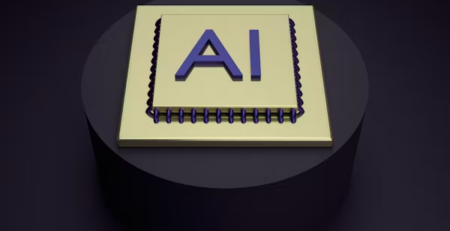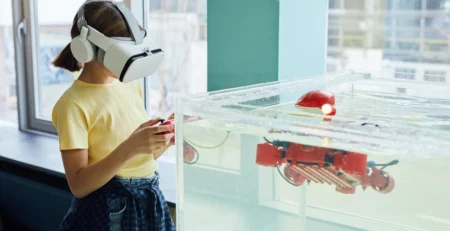How to Learn the Power Dynamics in a New Job
Power dynamics is a concept that exists in many industries, no matter how large or small the company is. Many employees are either actively looking for ways to push their agenda or striving for a promotion or notoriety.
Depending on the type of power dynamics that are at play in the workplace, it can be difficult for new employees to fit in because they don’t understand how they work. Because of this, it is important to learn as much as you can about the power dynamics that exist in your organization when you are first hired for the job.
Wondering how to learn about the power dynamics in your new job? Keep reading to find out.
What are Power Dynamics?
Power dynamics represent how the organization is set up, often concerning who has the power over others. Most people know and understand that in the corporate world, a CEO holds the power over the rest of the company.
In other organizations, managers and supervisors are typically known to hold power over their subordinates. Oftentimes this can be viewed as a positive or negative dynamic depending on how the supervisor uses their power.
There is some research, however, that shows that power dynamics are not necessarily created through the hierarchy of the organization by itself. This is because the authority of a higher position does not necessarily grant you power over others.
How do Power Dynamics Impact the Workplace?
Power dynamics can affect all aspects of a workplace since it is directly related to the culture of the organization. Depending on how those who are in a position of power interact with others can affect productivity as well as the overall morale of the company.
When those in power treat employees with respect and dignity, the same is returned and the power dynamics are viewed as a positive thing. However, when those who are in authority set out to show others that they are in charge, this can be seen as negative.
Depending on how strong the power dynamics are within a company can set the tone of meetings and other decision-making processes. This is because those who feel less powerful are less likely to speak up to those who are seen as having power.
Why is it Important to Learn Power Dynamics in a New Job?
When you are just starting a new job, it is important to learn how the power dynamics are set up within the company. In many cases, this is obvious since those in power positions will show themselves quickly to new employees.
Knowing where the power lies within an organization can be beneficial to new employees so that they know where the lines are. This is especially important if you are a more outspoken person who does not mind speaking up about certain issues.
The last thing you would want to do as a new employee is to cross any lines that may exist because of the power dynamics that exist. The best way to fit into a company culture is to know what the culture is and allow those in the power positions to show you how it works.
The main reason this is important is that if you do not know or embrace the culture at hand, you may find yourself either without a job. But, if you take the time to learn the power dynamics of your job, this could help you to succeed at your position and someday hold higher positions within the company.

Benefits of Power Dynamics in a New Job
While there are many downsides to the power dynamics within a new job, there are also many benefits that exist as well. This is especially true when the organization is aware of the dynamics and helps to shape them.
Here are some of the ways that power dynamics can be beneficial to an organization:
- Power Dynamics Shape the Organization
When it comes to the culture of an organization, power dynamics play an important role in every aspect of the organization. This is mostly because these dynamics can be seen as either positive or negative.
When the power dynamics within an organization are positive, the company is seen as healthy since employee morale is typically higher. In most cases, these are the organizations where employees feel at ease and not overwhelmed with the power that exists.
When the power dynamics are negative, however, employee morale takes a plunge and the culture is affected. This is typically seen through job turnover and lower productivity than what is expected.
- Power Dynamics can Open Lines of Communication
When employees are aware of how the power dynamics work within the organization, it can affect every aspect of the job. This is especially true when it comes to how employees communicate with each other.
Power dynamics can play a huge role in communication within a company especially when those in authority make it clear who will be listened to. For those organizations that view the dynamics of power to be more open, communication is extended to all.
In most cases, communication within a company is more open with employees who are on the same level of authority. When the lines of communication are viewed as being open, the power dynamics are seen as a positive thing.
- Power Dynamics Bring on Collaboration
When employees are aware of how the power dynamics work within the company, it opens the door to more collaboration. This is because when the levels of power are out in the open, employees tend to be more comfortable addressing certain issues with the right people.
Power dynamics pave the way for fewer power struggles especially when employees are aware of where the power is. They are more likely to ask questions when they are uncertain so that a power struggle does not affect their role in the company.
How to Learn the Power Dynamics in a New Job?
One of the most difficult parts of starting a new job is discovering how the power dynamics are shaped within a company. This is because most people know that if you don’t find out what those dynamics are in the beginning, they can affect your overall work performance.
When you are just starting an organization, you should discover what the power dynamics are as soon as possible. This will help you to find your place within the organization so that things run smoothly in the long run.
Here are some of the ways you can learn the power dynamics when you are in a new job:
1. Learn and understand the types of power dynamics that may exist
Depending on the research you find, you will discover that many different types of power dynamics may exist within an organization. In most cases, you should be able to figure out what dynamics are at play in your organization.
A few of the most common types of power dynamics are:
- Designated or Coercive Power
- Formal Power
- Reward Power
- Expert Power
- Informational Power
Once you learn the various types of power that may exist within your organization, you may be better equipped to learn where you may fit according to your position. It is important to keep in mind that the power dynamics of an organization can change over time and even sometimes from day to day.
2. Take the time to learn who employees look towards for advice and as an authority
While this may seem obvious that it would be those in management positions, this is not always the case. This is because there are often those employees who are seen as a better source of information and knowledge.
As you are getting to know other employees within your new job, you should take note of those who others turn to for various questions and advice. These are the people who have quite a bit of power within the organization.
Take the time to ask questions and do your research to discover those who may have moved up in the company more quickly than others. These are people who tend to hold more power in the grand scheme of things.
3. Understand that power is often interchangeable
It is important to keep in mind that while it may seem that most power within a company is static, it is often the opposite that is true. Power can be interchangeable depending on the current situation at hand.
For example, if operations are functioning normally, the power tends to lie in those in positions of authority. However, if something occurs to shift the operations, such as the recent pandemic, then others may rise to a level of power that is different from before.
This power shift can occur due to a variety of factors including the fact that one person may have more information about the situation than others. During a crisis, there is typically someone willing to step up and take charge, even if it was not their job.
When this happens, those employees tend to find themselves in a position where they are the ones to turn to in a crisis. This is when a company tends to see a shift in power dynamics.
4. Take a look beyond those in obvious power positions
While it may seem obvious that those who are in positions of authority would be at the helm of the power dynamics, this is not always the case. This is because while a manager or supervisor may be an authority figure, they may not hold the power.
For example, within some organizations a manager or department head may be the person of authority by position, however, the brains behind them are often the executive assistants. This is because the assistant is typically in a position of knowing how the organization works more thoroughly.
In some cases, these assistants have likely been at the company for many years and have been through many bosses along the way. They can be a great help to those in positions of power to navigate the nuances of the company.
As a new employee, getting to know these assistants can be beneficial since they may be able to send you in the right direction overall.

Downsides of Power Dynamics in a New Job?
While power dynamics in a workplace have many benefits, for a new employee, there may be many downsides. This is especially true if you do not take the time to learn the dynamics of the organization before you assert your own opinions and mandates.
These downsides are often seen when a new employee is put in a power position without knowing the power dynamics of the organization as a whole. Even though the position itself holds power, the new employee needs to sit back and observe how the organization works before attempting to assert themselves.
If you are starting a new job that is not in a power position, you should also take the time to learn about the organization. This is because the power dynamics within a company can make or break your position.
How Can You Use Power Dynamics for Your Benefit?
As a new employee, you can use the power dynamics within your organization for your benefit if you take the time to learn how they are structured. This means starting in your new job and observing your fellow employees learn who has the power.
Once you know who holds the true power in the company, you have the opportunity to immerse yourself into the fold. This provides you with the perfect setup to be seen as a team player and can give you certain opportunities along the way.
For example, adhering to the dynamics of the company by not “rocking the boat” those in the power positions may open doors for you that may not have existed before. When you are seen as a team player, you can move up within the company much quicker than those who often butt up against authority.
Ready to Use Power Dynamics in Your New Job?
Now that you know what power dynamics are and how they can affect your new role, you should be able to glide into your position easily. Having a good understanding of how power dynamics work and how you can learn to work with them can help you navigate your way back to work more efficiently.












